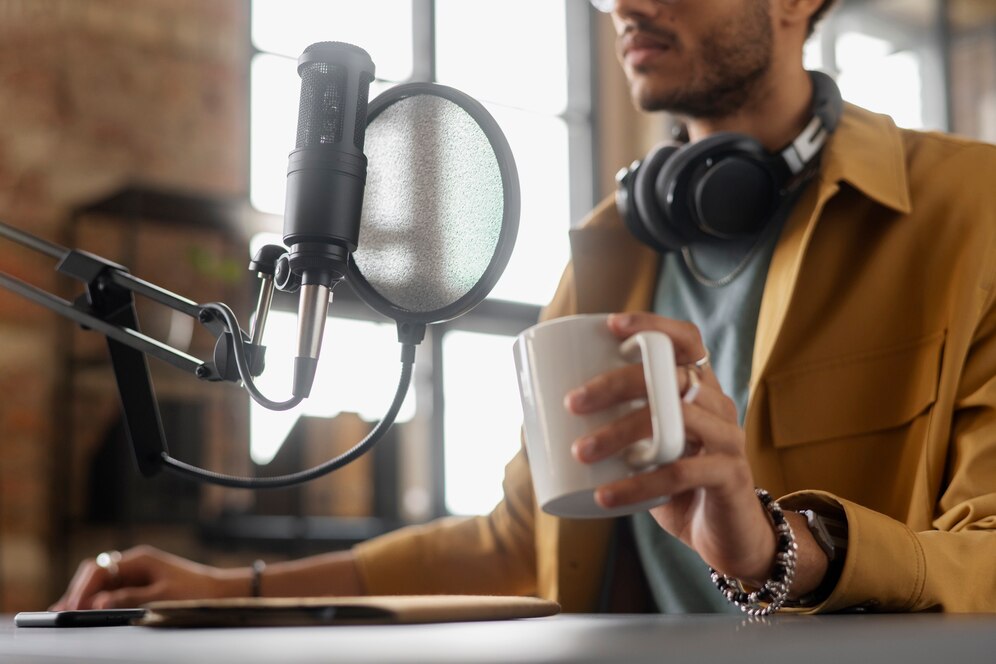Best USB Microphones for Voiceovers in 2025: A Complete Guide

Voiceovers require clarity, depth, and a crisp sound that captures every nuance of your voice. Whether you’re an aspiring voice actor, a podcaster, or a content creator, finding the right USB microphone in 2025 is crucial to achieving professional-quality audio. The good news? USB microphones have come a long way, offering studio-level sound without the need for complicated setups. This guide will walk you through the best USB microphones for voiceovers, breaking down everything you need to know to make an informed decision.
Why Choose a USB Microphone for Voiceovers?
USB microphones have revolutionized the world of voice recording. Unlike XLR microphones, which require an audio interface, USB mics plug directly into your computer, making them an excellent choice for beginners and professionals alike. Here’s why they stand out:
- Ease of Use: No extra equipment or software setup needed—just plug and play.
- Affordability: Many high-quality USB mics offer premium sound at a fraction of the cost of XLR setups.
- Portability: Ideal for remote work, streaming, or recording on the go.
- Studio-Grade Sound: Advanced condenser capsules and high sampling rates ensure rich, clear vocals.
Top USB Microphones for Voiceovers in 2025
After testing and analyzing various USB microphones, we’ve shortlisted the best models based on sound quality, features, and value for money.
1. Shure MV7 – The Professional’s Choice
If you’re serious about voiceovers and want a balance between USB and XLR functionality, the Shure MV7 is a top-tier choice. Inspired by the legendary Shure SM7B, this microphone delivers exceptional vocal clarity, enhanced with built-in DSP for tone shaping.
Key Features:
- Dual USB & XLR connectivity
- Auto Level Mode for real-time voice optimization
- Touch panel for mic gain and headphone volume control
- High-quality dynamic capsule for background noise rejection
2. Blue Yeti X – Best for Beginners and Streamers
The Blue Yeti X remains a favorite due to its ease of use and broadcast-quality audio. It features four polar patterns, making it versatile for different recording scenarios.
Key Features:
- High-resolution LED meter for real-time volume monitoring
- Four recording patterns: cardioid, bidirectional, omnidirectional, and stereo
- Blue VO!CE software integration for voice enhancement
- Plug-and-play USB connection
3. RØDE NT-USB+ – Best Condenser USB Mic for Voiceovers
The RØDE NT-USB+ is a professional-grade condenser microphone that excels in studio-quality voiceovers. Its ultra-low-noise preamp and 24-bit audio resolution ensure pristine sound.
Key Features:
- Built-in pop filter for clean vocals
- High-gain, ultra-low-noise preamp
- Studio-grade condenser capsule
- Zero-latency monitoring
4. Audio-Technica AT2020USB-X – Best for Podcasting and Broadcasting
An upgrade from the popular AT2020USB, this model offers enhanced features like 24-bit/96 kHz audio resolution, perfect for podcasting and narration.
Key Features:
- Built-in headphone jack for real-time monitoring
- High-output internal preamp for clear vocals
- Cardioid pickup pattern for background noise reduction
- Touch-sensitive mute button
5. Elgato Wave:3 – Best for Content Creators & Streamers
For gamers, streamers, and YouTubers, the Elgato Wave:3 provides seamless integration with Wave Link software for real-time voice mixing.
Key Features:
- Clipguard technology to prevent distortion
- Low-latency monitoring
- High-res 24-bit/96 kHz audio quality
- Wave Link software for advanced mixing
Comparison Table: Best USB Microphones for Voiceovers in 2025
| Microphone | Type | Audio Resolution | Connectivity | Best For |
|---|---|---|---|---|
| Shure MV7 | Dynamic | 48 kHz/24-bit | USB & XLR | Professional Voiceovers |
| Blue Yeti X | Condenser | 48 kHz/24-bit | USB | Streamers & Beginners |
| RØDE NT-USB+ | Condenser | 48 kHz/24-bit | USB | Studio Voiceovers |
| AT2020USB-X | Condenser | 96 kHz/24-bit | USB | Podcasting & Narration |
| Elgato Wave:3 | Condenser | 96 kHz/24-bit | USB | Gaming & Streaming |
How to Choose the Right USB Microphone for Your Needs
Before purchasing a USB microphone, consider these key factors:
1. Sound Quality
- Look for a mic with a wide frequency response (20 Hz – 20 kHz) for rich, natural vocals.
- A higher bit depth (24-bit) and sampling rate (48-96 kHz) ensure studio-quality recordings.
2. Pickup Pattern
- Cardioid: Best for solo voiceovers, podcasts, and streaming.
- Omnidirectional: Ideal for multi-person recordings.
- Bidirectional & Stereo: Useful for interviews and music recording.
3. Additional Features
- Built-in pop filters reduce plosive sounds.
- Gain control & mute buttons for real-time adjustments.
- Zero-latency monitoring ensures you hear yourself in real-time.
FAQs About USB Microphones for Voiceovers
1. Are USB microphones good for professional voiceovers?
Yes! Many modern USB microphones, like the Shure MV7 and RØDE NT-USB+, deliver professional-quality audio suitable for commercial projects.
2. Do I need an audio interface for a USB microphone?
No. USB microphones have built-in interfaces, allowing them to connect directly to your computer.
3. Can I use a USB microphone for live streaming?
Absolutely! Mics like the Elgato Wave:3 are optimized for streaming with real-time processing features.
4. What’s the difference between condenser and dynamic USB microphones?
- Condenser microphones capture more detail, making them ideal for voiceovers in controlled environments.
- Dynamic microphones reject background noise better, great for untreated rooms.
5. How do I reduce background noise in my recordings?
- Use a pop filter and foam windscreen
- Record in a quiet, treated space
- Adjust mic gain levels to minimize ambient noise
Final Thoughts: Which USB Mic Should You Choose?
The best USB microphone depends on your specific needs. If you’re looking for a premium studio sound, go for the RØDE NT-USB+. For beginners and streamers, the Blue Yeti X offers flexibility and ease of use. Serious voice actors will appreciate the dual XLR/USB capabilities of the Shure MV7.
Whichever microphone you choose, the key to great voiceovers is consistent practice, proper mic technique, and a well-treated recording environment. Happy recording!






